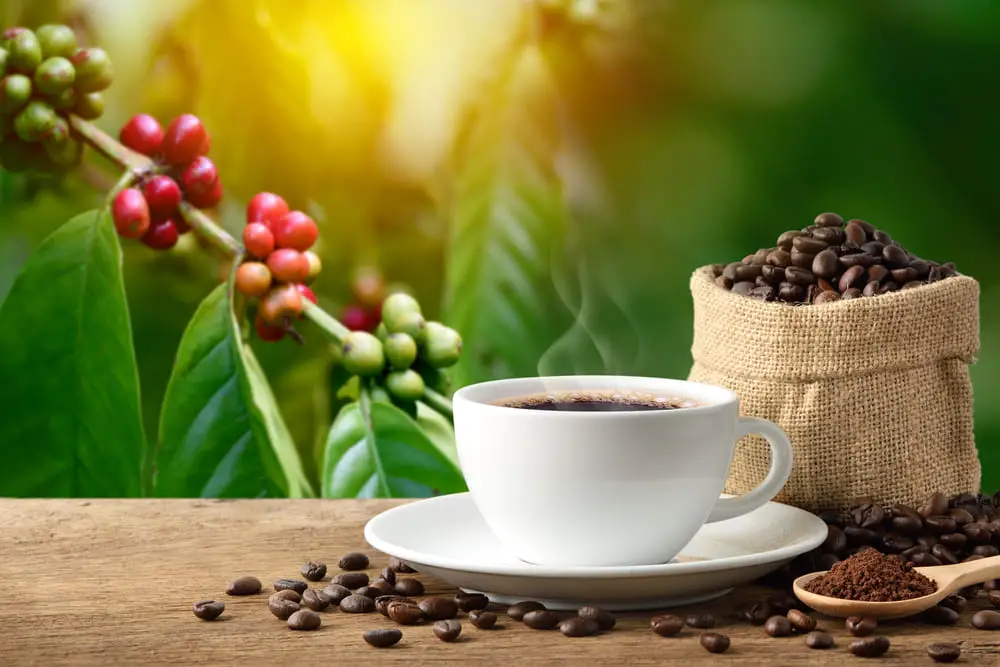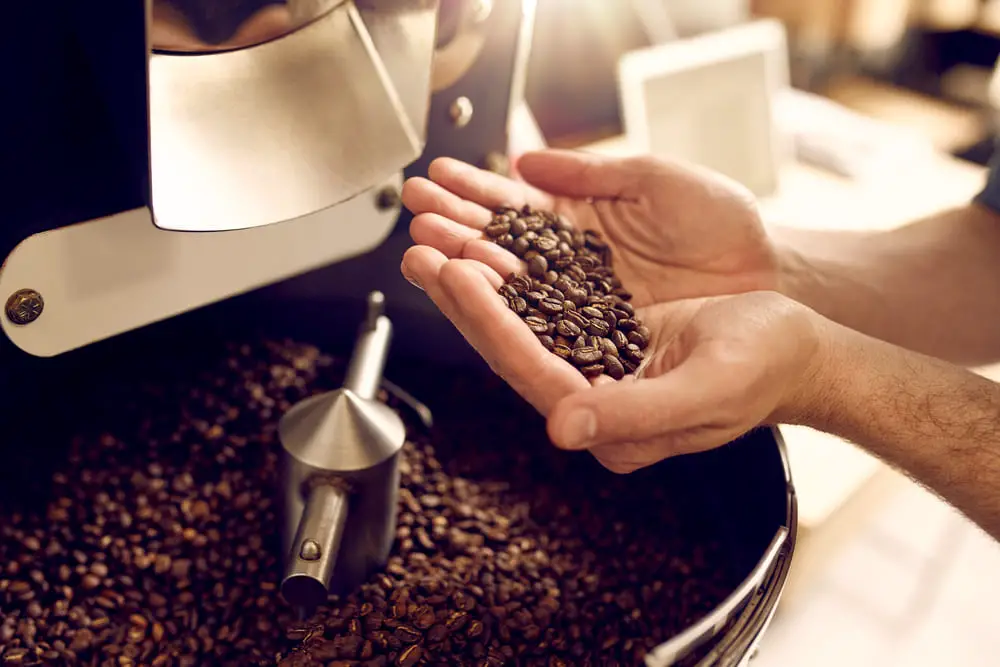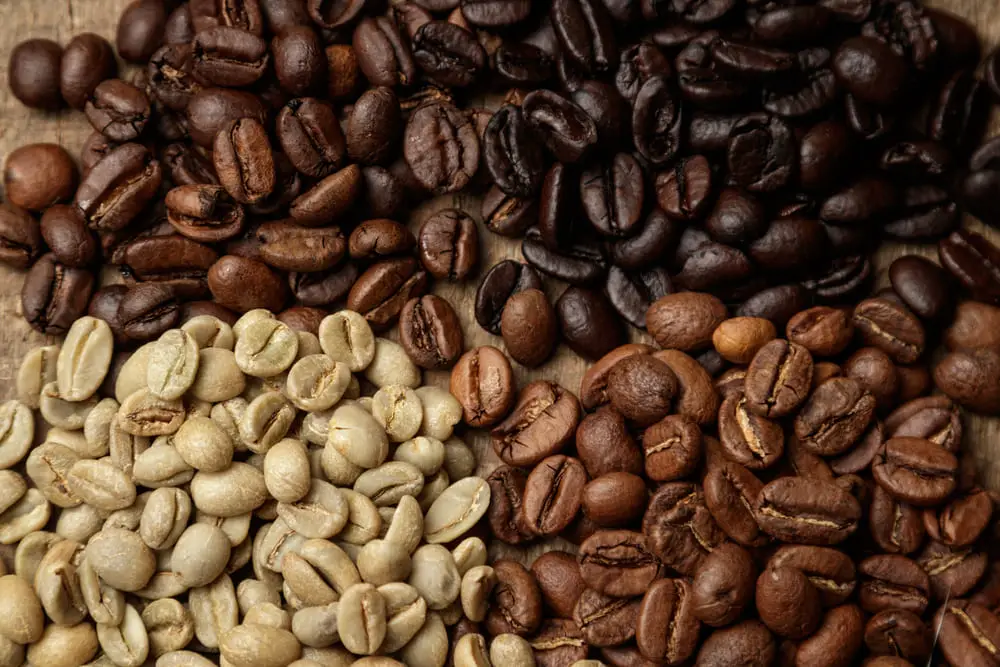In the US, a 2020 research by the National Coffee Association found that 62 percent of Americans drank coffee every day and 7 out of 10 people there drank it weekly. These statistics demonstrate that coffee has been and continues to hold the top spot among beverages that people throughout the world, including Americans, enjoy.
Obviously, it is quite understandable that more and more people are drinking coffee thanks to the fantastic advantages of the beverage, such as giving an energy boost for a day of sobriety and assisting in the prevention of certain diseases in humans. Among many varieties of coffee produced using various roasting techniques, black coffee is the pinnacle of coffee’s purest form. However, some individuals continue to ponder questions like “What does black coffee mean” or “What is the difference between black coffee and brown coffee?”. Let’s dig deep into this article to figure out the answers.
What Is Coffee And Where Does It Originate From?
A Brief Introduction To Coffee
Coffee is a caffeinated beverage made from coffee beans that have been hulled, roasted, and ground. The coffee varieties are indigenous to tropical Africa and the equatorial islands of Madagascar, Mauritius, Réunion, and Comoros. This plant is currently grown in more than 70 nations all over the world.

Coffee cherries are selected after they are fully mature, then they undergo many processing steps before being roasted, ground, and combined with water. Depending on the demands of the market, the processing procedure also comes in a variety of forms, such as dry processing, wet processing, and honey processing. Additionally, dry coffee beans are roasted at a variety of temperatures, from light roasting to dark roasting. Following this, they are ground to fine or coarse grain sizes and then brewed with boiling or cold water using different types of coffee machines, from basic to specialized, to produce coffee in the form of a drink.
The Origins Of Coffee
In the highlands of Ethiopia, coffee was originally found in the ninth century. Through slave traffickers, it spread from there to Egypt and Yemen, and by the 15th century, it had reached Armenia, Persia, Turkey, and Northern Africa. Coffee beans were roasted at this time and used as a beverage. After that, it was eventually taken to Muslim countries, Italy, and many other nations in Europe, Indonesia, and the United States.
According to a legend (which was put down in writing in 1671), goat herders in Kaffa (modern-day Ethiopia) by coincidence found that some of their goats could gallop and leap till late at night without getting weary after they consumed a branch with white blossoms and scarlet fruit. A goat herder then gave it a try and discovered the same result, so they traveled to a local monastery and shared the tale.
When the monks located the goat herd’s grazing location, they spotted a tree there with dark-green leaves and fruits that looked like cherries. Surprisingly, they could converse till late at night just by sipping the fruit juice. Therefore, it was formerly believed that it was the goats that discovered coffee.
What Is Black Coffee?
Simply put, black coffee is regular coffee that is dark brown or black when the grinds are brewed alone without any additional ingredients. True coffee enthusiasts frequently like this coffee since it is the purest. For people who find black coffee to be excessively bitter, they can combine it with milk/cream and sugar to make it more pleasant.

The hue of pure coffee ranges from cockroach wings to deep brown. Coffee will turn amber brown, a very appealing clear brown hue when you add ice to it. Looking at the pure iced coffee in the sunshine, you will see a shimmering light brown hue. This is most likely another explanation for the question of whether coffee is black or brown. Actually, your cup of coffee will either be black or brown depending on the roasting level and the variety.
Types Of Roasting For Coffee
Why Is Coffee Roasted?
The fragrance and taste that are tucked away in green coffee beans are released with the aid of roasting. Green coffee beans may be maintained in their preserved form without losing their flavor or quality. However, these beans differ greatly from roasted coffee beans in every way. When nibbled, green coffee beans are soft, spongy, and smell like grass. Apparently, bringing green coffee to make is not an option. To obtain a great cup of coffee, they must undergo some roasting process.

The technique of roasting involves utilizing heat to promote chemical changes in the coffee bean. After roasting, coffee beans have a highly complex, delicious, and rich flavor. Due to the separation of the moisture during roasting, coffee beans become fragile and drier, meaning that they are ready for grinding and brewing afterward.
Levels Of Coffee Roasting
The oldest method of making coffee is probably the one used in Ethiopia. After being roasted in a big iron pan, coffee beans are crushed or placed in a mortar. In a jebena (a narrow-necked flask with a handle), the sugar and crushed seeds are combined, heated, and then poured into a dish.
In the modern world, the process of roasting coffee is still crucial to brewing the ideal cups of coffee. Years of education and experience are necessary to become a skilled coffee roaster. The professional roaster is the one who is able to “read” the beans and determine the ideal roasting recipe. It is true that it only takes some seconds for a roast to go from great to terrible.

Although there are many various roasting degrees in use today, there are really just four. The flavor will vary depending on the roasting level and the style of preparation.
Light Roast
This is the most favored type of roasting in the world. When you hear the “first crack” after a while of roasting, it’s done. The coffee beans are noticeably larger in size, vivid orange-brown in color, dry, and oil-free on the surface.
The reason why light roast coffee is so well-liked worldwide is that it exhibits a wide range of subtle taste variations. This grade of coffee has a strong acidity and a thin body. Coffees from places like Ethiopia, Kenya, Hawaii, and Jamaica are frequently light roasted to let their unique qualities stand out.
Moderate/ Medium Roast
Medium roast is also attained right after the “first crack” but before the “second crack” takes place. Coffee shall have a medium brown color, with a dry surface and no surface oil. In America, medium-roasted coffee is highly well-liked. In comparison to a light roast, this kind of roasting will result in a sweeter color tone. Additionally, the body’s acidity, fragrance, and taste are all better matched.
Medium-Dark Roast
When the beans are just past the “second crack,” they are said to be medium-dark roasted. At this point, you’ll start to notice oil floating on top of the coffee beans. Dark brown and somewhat glossy coffee will be the result.
Spice, chocolate, and dark berries will dominate the flavor profile during medium-dark coffee roasting. A cup of medium-dark coffee will have a pleasant fragrance and little acidity. If roasted to this degree, coffees from Central America, South America, and Indonesia will taste excellent.
Dark Roast
The coffee beans immediately darken after the “second fracture,” and the oil oozing out makes the surface glossy. Spanish-roasted coffee often contains a lot of oil on the surface, making it charcoal black and lustrous. At this stage of roasting, the roast will start to smoke, which is the carbonization of the sugars.
This roast level will provide a smoky/sweet flavor with a light body. Less acidic roasts tend to be deeper in color. In addition, the darker the roast, the more quickly caffeine loses taste and breaks down. So, compared to lightly roasted coffee, dark roasted coffee will be less stimulating. Robusta beans with a lot of caffeine are frequently used to produce espresso partly because of this.
Final Thought
For many individuals, drinking coffee—especially black coffee—has become second nature. However, you should be cautious about drinking coffee to avoid overdosing and harming your health.
